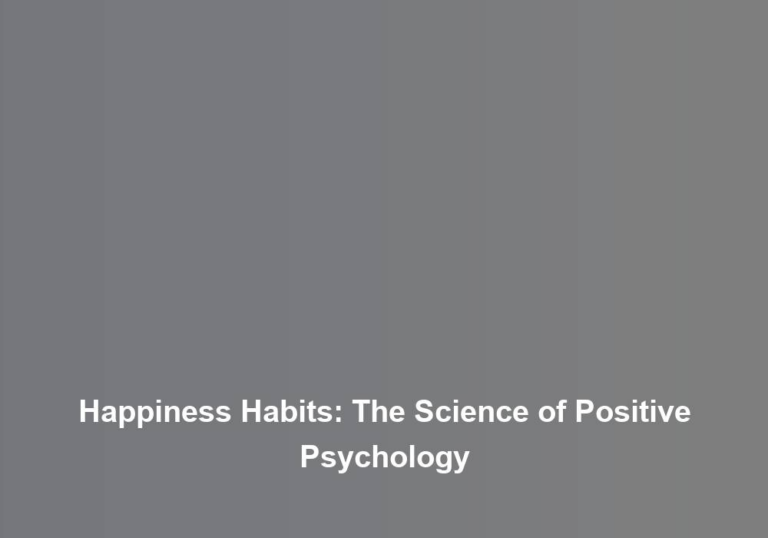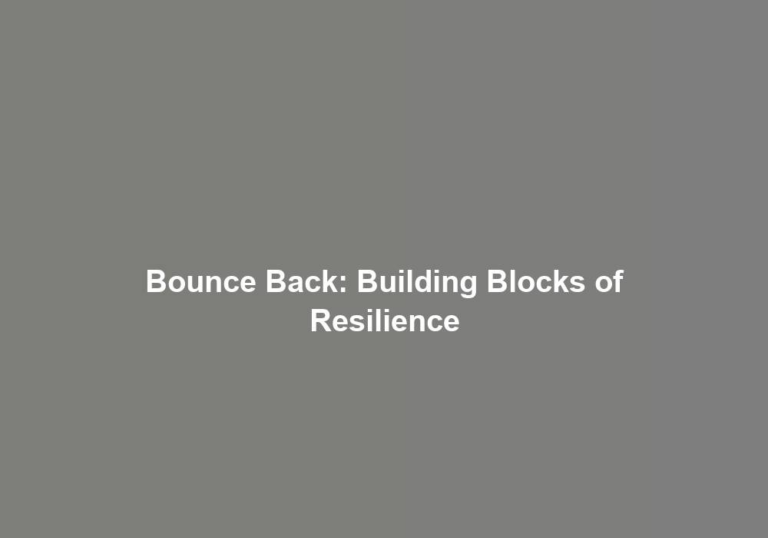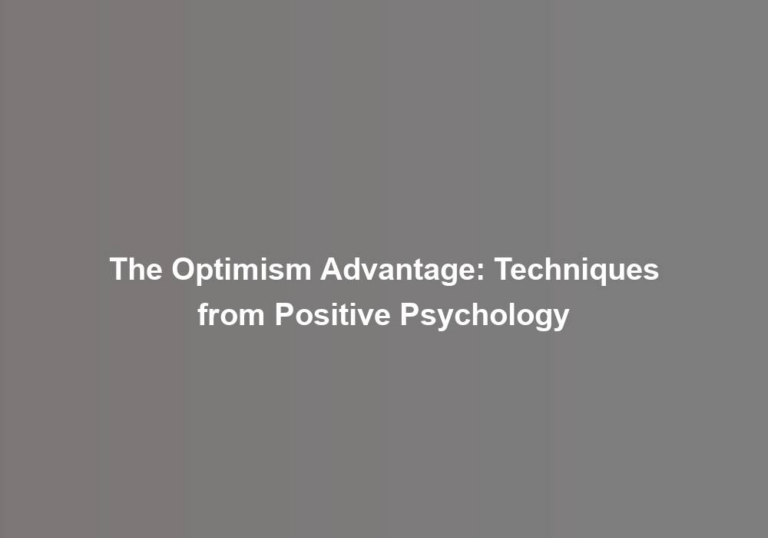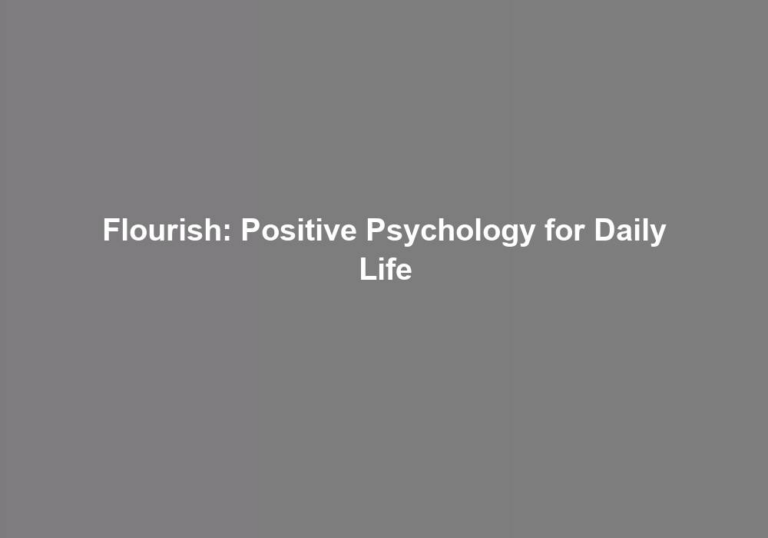Happiness Harvest: Grow Your Joy with Positive Psychology
YouG??ve probably heard the saying, G??You reap what you sow.G?? When it comes to happiness, this adage holds true. But how can you cultivate joy in your life? Positive psychology offers a research-based roadmap to help you navigate the terrain of happiness. By understanding the science of happiness and implementing practical strategies, you can sow the seeds of joy and reap the bountiful harvest of a fulfilling and contented life. But where do you begin?
The Science of Happiness
Understanding the science of happiness can provide valuable insights into the factors that contribute to well-being and satisfaction in life. Positive psychology emphasizes the importance of cultivating a positive mindset and adopting happiness habits to enhance overall well-being. Research indicates that individuals who consciously practice gratitude, mindfulness, and optimism tend to experience higher levels of happiness and life satisfaction. By understanding the science behind these happiness habits, you can proactively take steps to incorporate them into your daily life.
Developing a positive mindset is a fundamental aspect of the science of happiness. It involves training your mind to focus on the present moment, embracing a hopeful outlook, and reframing negative thoughts into positive ones. Studies have shown that individuals who engage in positive self-talk and maintain an optimistic perspective are better equipped to navigate lifeG??s challenges and experience greater emotional resilience.
Furthermore, happiness habits play a crucial role in fostering well-being. Engaging in acts of kindness, nurturing social connections, and finding purpose in everyday activities are all proven strategies for increasing happiness. By integrating these habits into your routine, you can create a more fulfilling and joyful life.
Incorporating the science of happiness into your daily life empowers you to take an active role in nurturing your well-being. By adopting a positive mindset and embracing happiness habits, you can cultivate a greater sense of belonging and fulfillment, ultimately leading to a more joyous and meaningful existence.
Understanding Positive Psychology
Cultivating a positive mindset and integrating happiness habits from the science of happiness can serve as a solid foundation for comprehending positive psychology and its impact on overall well-being. Understanding positive psychology involves delving into the factors that contribute to emotional well-being and the cultivation of a flourishing life. In essence, positive psychology emphasizes the importance of focusing on strengths and virtues to enhance happiness and fulfillment.
| Factors Contributing to Emotional Well-Being | Understanding Positive Psychology | Benefits of Positive Psychology |
|---|---|---|
| Positive Emotions | Identifying and nurturing positive emotions such as joy, gratitude, and contentment can significantly impact overall well-being. | Increased resilience and improved physical health. |
| Engagement | Engaging in activities that provide a state of flow, where time seems to stand still and you are fully absorbed in the present moment, can enhance overall satisfaction and well-being. | Enhanced creativity and a greater sense of accomplishment. |
| Relationships | Cultivating positive and meaningful relationships can lead to greater happiness and life satisfaction. Building strong social connections is crucial for emotional well-being. | Increased sense of belonging and support during challenging times. |
| Meaning and Purpose | Discovering a sense of meaning and purpose in life can lead to a deeper sense of fulfillment and contentment. | Greater resilience in the face of adversity and a more optimistic outlook on life. |
| Accomplishments | Recognizing and celebrating personal accomplishments, no matter how small, can contribute to a greater sense of well-being and satisfaction. | Improved self-esteem and a sense of competence. |
Understanding positive psychology provides a framework for individuals to develop a deeper understanding of their own emotional well-being and the tools to cultivate a more fulfilling and joyful life. By focusing on strengths, positive emotions, and meaningful connections, individuals can elevate their overall well-being and thrive in their daily lives.
Cultivating Joy Through Gratitude
You can actively cultivate joy in your life by integrating gratitude into your daily routine. Research shows that practicing gratitude has a significant impact on increasing feelings of joy and happiness. By engaging in simple daily gratitude practices and expressing your appreciation to others, you can enhance your overall sense of well-being and fulfillment.
GratitudeG??s Impact on Joy
Practicing gratitude can significantly enhance your joy and overall well-being, leading to a more fulfilled and positive outlook on life. Research in happiness has shown that gratitude journaling is a powerful tool for boosting happiness levels. HereG??s how you can harness the impact of gratitude on joy:
- Start a gratitude journal: Dedicate a few minutes each day to jot down things you are grateful for. This practice can help train your mind to focus on the positive aspects of your life.
- Reflect on three good things: At the end of each day, reflect on three positive experiences or aspects of your day. This exercise can help shift your focus from negativity to gratitude, boosting your overall joy.
Daily Gratitude Practices
One effective way to incorporate daily gratitude practices into your routine is by setting aside a few moments each morning to consciously acknowledge and appreciate the positive aspects of your life. You can start by gratitude journaling, jotting down three things you are grateful for each day. Additionally, practicing mindfulness meditation can help you cultivate a deep sense of gratitude by focusing on the present moment and acknowledging the abundance in your life. HereG??s a simple way to get started:
| Morning Gratitude Practice |
|---|
| 1. Write down 3 things you are grateful for in your gratitude journal. |
| 2. Spend 5-10 minutes practicing mindfulness meditation, focusing on gratitude. |
| 3. Reflect on how these practices make you feel more connected and joyful. |
Incorporating these daily gratitude practices can help you foster a deeper sense of appreciation and joy in your life.
Expressing Gratitude to Others
Cultivating joy through gratitude involves expressing heartfelt appreciation to others, fostering connections and uplifting spirits in meaningful ways. Here are some practical ways to express gratitude and enhance your joy:
-
Gratitude Journaling and Thank You Notes:
-
Start a gratitude journal to regularly jot down things you are thankful for.
-
Write thank you notes to express your appreciation to friends, family, or colleagues.
-
Acts of Kindness and Appreciation Rituals:
-
Perform random acts of kindness for others, such as helping a neighbor or buying a coffee for a stranger.
-
Create appreciation rituals, like sharing a meal with loved ones and taking turns expressing gratitude.
Practicing Mindfulness for Well-being
If you want to boost your well-being and happiness, practicing mindfulness is a powerful tool. Research has shown that mindfulness can benefit your mental and physical health, as it fosters a strong mind-body connection. To start incorporating mindfulness into your daily routine, consider simple tips like setting aside time for meditation, focusing on your breath, and being present in the moment.
Mindfulness Benefits Well-Being
Practicing mindfulness can significantly enhance your overall well-being and happiness. Engaging in mindfulness meditation has been shown to reduce stress, leading to a more peaceful state of mind. This practice allows you to focus on the present moment, bringing a sense of calm and clarity to your daily life. By incorporating mindfulness into your routine, you can experience a range of benefits that contribute to your well-being. HereG??s how you can enjoy the benefits of mindfulness:
- Cultivate a greater sense of self-awareness
- Improve your ability to manage emotions and reactions
Embracing mindfulness not only promotes stress reduction but also fosters a deeper connection with yourself and the world around you. As you practice mindfulness, youG??ll find yourself better equipped to navigate lifeG??s challenges with resilience and inner peace.
Mind-Body Connection in Mindfulness
Engaging in mindfulness practice fosters a powerful connection between your mind and body, promoting holistic well-being and a deeper sense of self-awareness. By incorporating mindfulness techniques into your daily routine, you can actively reduce stress and enhance your mind-body awareness. Through focused breathing, body scans, and meditation, you can cultivate a heightened sense of emotional regulation, allowing you to navigate lifeG??s challenges with greater ease. This mind-body connection is not just a theoretical concept; itG??s a tangible experience that you can cultivate through consistent practice. As you become more attuned to the present moment and your bodily sensations, youG??ll notice a positive shift in your overall well-being. Embracing the mind-body connection through mindfulness empowers you to foster a harmonious relationship between your thoughts, emotions, and physical sensations, contributing to a more balanced and joyful life.
Daily Mindfulness Practice Tips
To enhance your well-being through daily mindfulness practice, focus on incorporating simple techniques that promote present-moment awareness and emotional balance. Engaging in mindful breathing can serve as the foundation of your daily practice, allowing you to anchor yourself in the present moment and cultivate a sense of calm. Additionally, practicing sensory awareness can help ground you in the here and now, fostering a deeper connection with your surroundings. Here are some tips to help you enjoy your daily mindfulness practice:
- Practice mindful breathing techniques to center yourself and bring focus to the present moment.
- Try deep belly breathing to calm your nervous system and promote relaxation.
- Engage in sensory awareness by intentionally noticing the sights, sounds, and sensations around you.
- Take moments to focus on specific details in your environment, such as the texture of an object or the sounds of nature.
Building Resilience and Optimism
Cultivating resilience and optimism can be achieved by actively seeking out positive perspectives in challenging situations and practicing gratitude for the lessons they bring. Building resilience involves developing the mental toughness to navigate through adversity and come out stronger. When faced with difficulties, focus on the aspects within your control and explore different ways to approach the situation. Embracing a growth mindset can help you view setbacks as opportunities for learning and personal development. By reframing challenges as opportunities for growth, you can build resilience and adaptability.
In addition to resilience building, optimism cultivation plays a crucial role in enhancing your overall well-being. Optimism involves maintaining a positive outlook and expecting good outcomes, even in the face of adversity. One way to foster optimism is by practicing gratitude. Taking time to appreciate the positive aspects of your life can shift your perspective towards a more optimistic outlook. Furthermore, surrounding yourself with positive and supportive individuals can help nurture an optimistic mindset.
ItG??s important to acknowledge that building resilience and cultivating optimism are ongoing processes that require consistent effort and dedication. By integrating these practices into your daily life, you can enhance your ability to bounce back from challenges and maintain a positive outlook, ultimately contributing to your overall happiness and well-being.
Nurturing Positive Relationships
As you continue to strengthen your resilience and optimism, nurturing positive relationships can significantly contribute to your overall well-being and happiness. Cultivating healthy boundaries and supportive friendships is essential for creating and maintaining positive relationships. Here are some practical ways to nurture positive relationships:
-
Healthy Boundaries
-
Self-Care: Prioritize taking care of yourself and set aside time for activities that bring you joy and relaxation. Communicate your needs to your friends and loved ones, and donG??t be afraid to say no when necessary.
-
Clear Communication: Establish open and honest communication with the people in your life. Express your thoughts and feelings respectfully, and encourage others to do the same. Setting clear boundaries through effective communication can lead to stronger, more meaningful relationships.
-
Supportive Friendships
-
Quality Time: Spend quality time with your friends, whether itG??s through shared activities, heartfelt conversations, or simply being present for one another. Show genuine interest in their lives and offer your support when needed.
-
Positive Influence: Surround yourself with individuals who uplift and inspire you. Seek out friends who share your values and encourage personal growth. Likewise, strive to be a positive influence in the lives of your friends, offering support and encouragement in their endeavors.
Conclusion
Now that you have the tools to cultivate your happiness garden, go forth and tend to it with care. Nurture your joy like a skilled gardener, watering it with gratitude, weeding out negativity with mindfulness, and building sturdy fences of resilience and optimism. Let the sunlight of positive relationships shine on your flourishing happiness harvest. With the science of positive psychology as your guide, your garden of joy will bloom and thrive.







